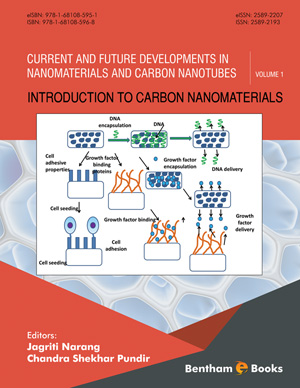Introduction
ISSN: 2589-2193eISSN: 2589-2207
ISBN: 978-1-68108-596-8
eISBN: 978-1-68108-595-1 (Online)
Carbon is one of the most investigated material in the history of nanoscience and is mainly responsible for the current nanotechnology boom. The field of technology is very progressing at an exponential rate, with a wide variety of research articles and book chapters appearing in scholarly literature every year.
Introduction to Carbon Nanomaterials presents information on new technologies based on the application of carbon nanotubes and the methods used to prepare carbon nanotubes are also discussed in detail.
- - Emphasizes the mechanisms used in developing and synthesizing carbon nanotubes.
- - Explains the unique electrical, optical, mechanical, thermal and vibrational properties of carbon nanotubes with changes in these properties due to structural differences.
- - Provides information about applications of enhanced carbon nanotube structures with bibliographic references
- - Highlights the significance of carbon nanotubes in delivering a wide variety of molecular payloads including drugs, small organic molecules, oligonucleotides, proteins, siRNA, vaccines and nutrients.
- -Explains the effects of carbon nanotubes on biological processes such as cell viability, proliferation, reactive oxygen species (ROS) generation, genotoxicity, extracellular matrix remodelling/tissue remodeling, mutagenicity and toxicology
Introduction to Carbon Nanomaterials is a useful resource for novice nanotechnology researchers, undergraduates and post-graduate students who are interested to pursue a career in carbon nanomaterials research.

